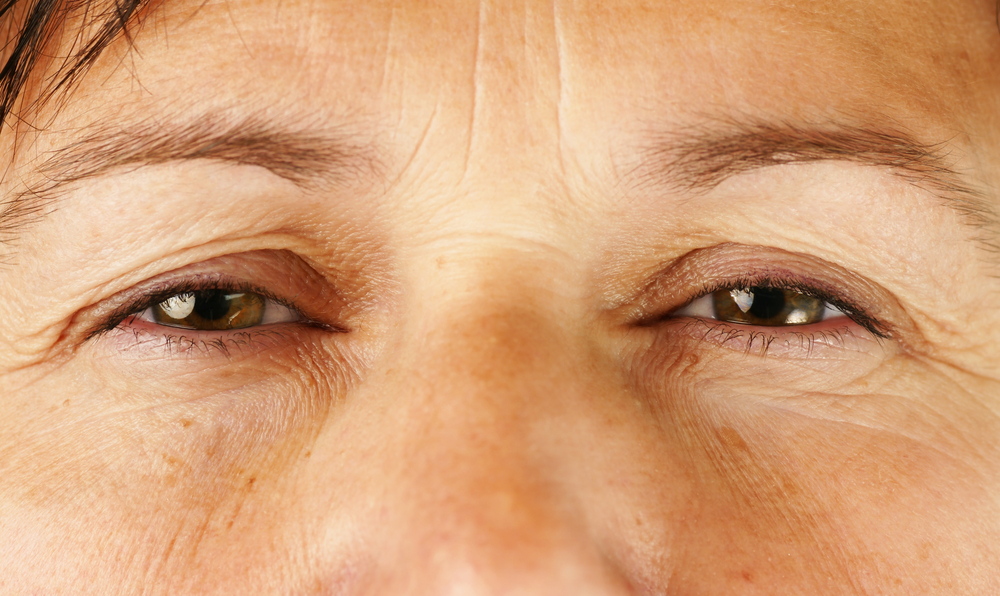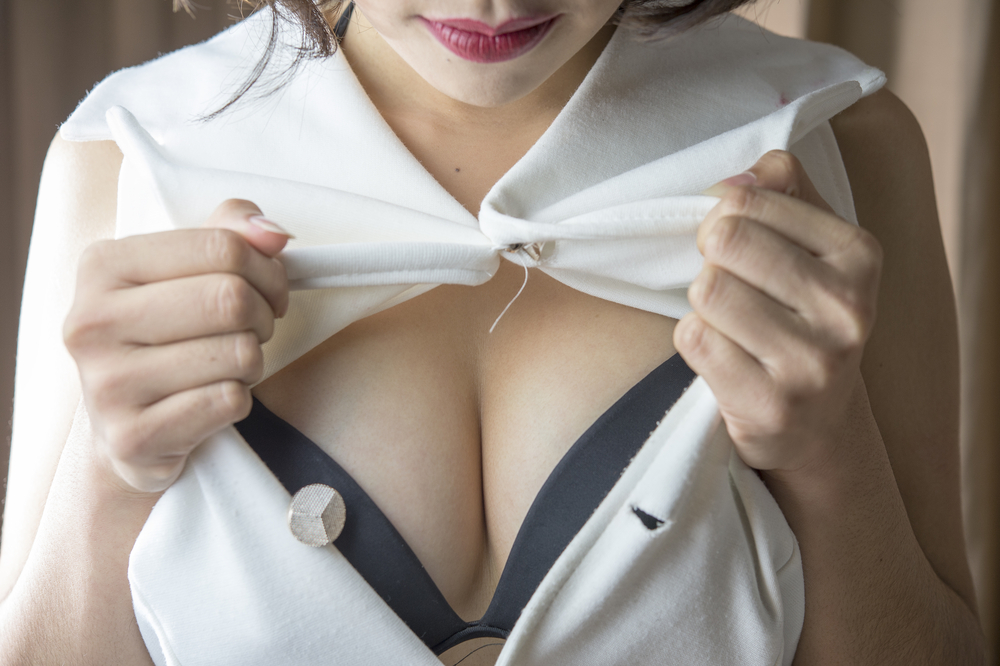- Canthal tilt can be classified as positive, neutral, or negative, depending on the angle between the outer and inner corners of the eye.
- A slightly positive angle is generally more desirable, and gives the eyes a more youthful appearance.
- Correcting your canthal tilt requires canthal tilt surgery, of which there are two types: canthopexy and canthoplasty.
Canthal tilt — the angle between the inner and outer corners of the eye — is a key factor in facial aesthetics.
The point at which the upper and lower eyelids meet on the outside corner of the eye is known as the lateral canthus, whereas the inner corner of the eye is known as the medial canthus. Collectively, the lateral canthus and medial canthus are referred to as the canthi.
Time tends to have a negative effect on the canthal tilt in both men and women. “As people age the tendons of the eyelids get looser and the tilt of the canthus becomes more negative,” says David A. Schlessinger, MD, an ophthalmologist cosmetic surgeon based in Woodbury, New York.
People with a negative canthal tilt often ask plastic surgeons about the appearance of their eyes and whether there is anything they can do to improve it. Luckily, there is.
“It’s desirable to help move the canthus to a more positive angle in older patients to help restore a more youthful look,” Schlessinger says, “and this is achieved through canthal tilt surgery.”
If you’re unsatisfied with the appearance of your eye area and considering lower or upper eyelid surgery, your surgeon will be able to assess your canthal tilt and provide you with his or her medical advice concerning the situation.
Types of Canthal Tilt
A person’s canthal tilt can be classified as positive, neutral, or negative, depending on the angle between the canthi.
Women with attractive eyes generally have a positive canthal tilt, which means, ideally, a slight tilt at a five- to eight-degree angle between the lateral and medial canthus. “This is youthful, feminine, and attractive,” says William H. Truswell, MD, President of the American Academy of Facial Plastic & Reconstructive Surgery (AAFPRS).
A neutral canthal tilt occurs when no angle exists between the medial canthus and lateral canthus. “When the line is flat it is a neutral tilt. This is more masculine and can denote aging or sadness,” Truswell says. While men generally look fine with a neutral canthal tilt, many women who acquire one complain that their eyes have a “tired” appearance.
According to Truswell, both women and men with aging eyes often have a negative canthal tilt. A negative tilt often goes hand in hand with excess upper and/or lower eyelid skin. Those with a negative tilt are likely to have an even more tired look than those with a neutral canthal tilt.

How to Determine Your Canthal Tilt
If your eyes look tired or aged, you’re probably anxious to do something about it. However, there really is no good way for you to self-assess whether your eyes’ appearance has to do with your canthal tilt.
Determining your canthal tilt will require consultation with a qualified facial plastic or oculoplastic surgeon. These specialists have received years of specialized training and are the only professionals fully qualified to evaluate canthal tilt.
When meeting with your surgeon tell him or her what your goal is, and allow them to take detailed measurements and conduct an in-depth evaluation of the eye area. This will allow him or her to provide you with realistic treatment options.
How to Prevent Premature Dropping of the Canthi
The best way to avoid or forestall negative changes to your canthal tilt is to take care of your skin. “Maintaining good skin health can put off premature dropping of the lateral canthus,” Truswell explains.
According to Truswell one of the most important measures you can take is to avoid smoking, as this compromises the elasticity of bodily tissues, including your lower lids. This, in turn, leads to laxity in the eyelids’ skin and support structures (not to mention numerous potential health problems).
Truswell also emphasizes the importance of using good skincare products, including sunscreen.
Another thing you can do is invest in an eye cream that promotes collagen production. Ask your primary care provider or dermatologist for a recommendation.
Canthal Tilt Correction: Canthopexy vs. Canthoplasty
If you’re past the point of prevention and suspect your tired-looking eyes are the result of a negative canthal tilt, you’re probably wondering if plastic surgery will make you look younger.
Correcting your canthal tilt requires canthal tilt surgery, of which there are two types: canthopexy and canthoplasty.
Canthopexy is a procedure designed to tighten the canthal tendon and performed when reconstruction of the lateral canthal tendon is unnecessary.
In contrast, canthoplasty is performed when reconstruction of the lateral canthal tendon is necessary. Canthoplasty is far more involved and invasive than canthopexy. Usually, the procedure involves splitting the canthal angle and cutting the lateral canthal tendon away from the lateral orbital rim. The lower lid is then shortened and a new lateral canthal angle created using stitches.
During outer canthoplasty, the lateral canthus is tightened and elevated. This allows the surgeon to accurately restore a positive canthal tilt, and ideally create a more natural appearance. Lateral canthoplasty can be used during any form of lower eyelid surgery. If the patient already has a positive canthal tilt, the surgeon may still perform canthoplasty for extra support so the positive tilt will endure.
As Schlessinger notes, technically standard eyelid surgery (blepharoplasty) does not address canthal tilt nor change the shape of the eye. Instead, it is meant to improve the appearance of tired or baggy eyelids. However, as Truswell points out, canthal tilt is taken into account during the initial consultation for those considering blepharoplasty.
Assessing canthal tilt is an important part of a plastic surgeon’s evaluation of the lower eyelid, because the lower eyelid is a vital aesthetic and functional component of the face.
Canthal Tilt Surgery and Blepharoplasty
Sometimes canthal tilt surgery is combined with blepharoplasty for optimal results. “Adding canthoplasty to a blepharoplasty procedure can help tighten the eyelid,” says Schlessinger. The canthal tilt can be changed by further adding a canthopexy technique whereby the tendons are not only tightened but moved and reattached to the bony orbital rim.
“The tendons of the outer canthus need to be surgically disinserted from their attachments to the bone of the bony rim of the eyelid and moved up or down in order to change the angle,” Schlessinger explains. “The medial [canthus] is much more difficult to change and generally only operated on for reconstructive (i.e., trauma or cancers) rather than cosmetic purposes.”
Adding canthoplasty to lower eyelid surgery shouldn’t affect the recovery period. However, canthal tilt procedures are intricate, therefore requiring extensive training, experience and skill.
“Canthopexies and canthoplasties should only be performed by surgeons with proper training and experience in that area,” says Schlessinger. “Most oculoplastic surgeons are very familiar with this technique as we routinely perform it for our reconstructive patients.”
When done correctly, canthoplasty should last for life. Canthopexy doesn’t last quite as long, but neither will be successful if you choose a surgeon who lacks the right training and expertise.
If you are interested in learning more about canthal tilt surgery, the next thing to do is schedule a consultation with a board-certified oculoplastic surgeon, plastic surgeon, or facial plastic surgeon. You can consult Zwivel’s directory to find a qualified surgeon in your area here.









